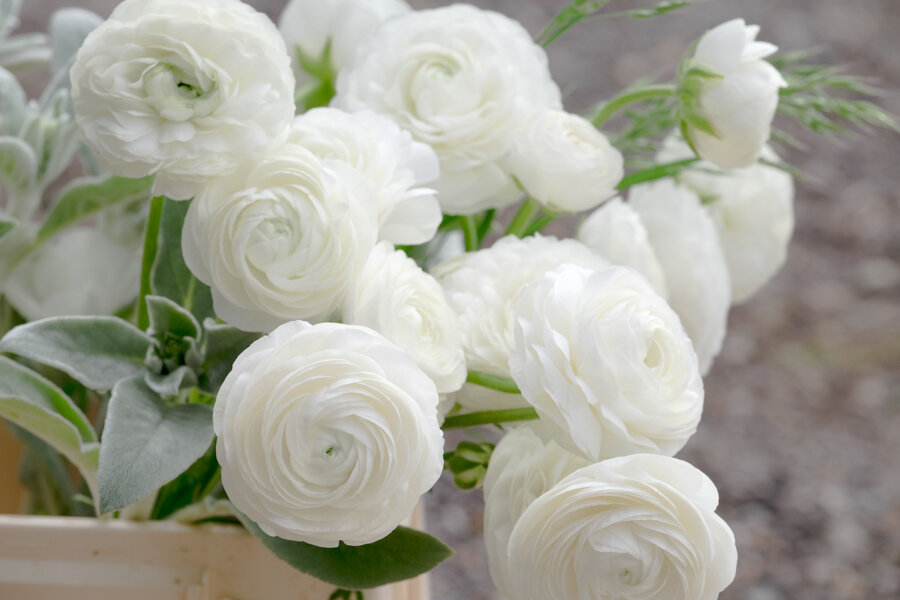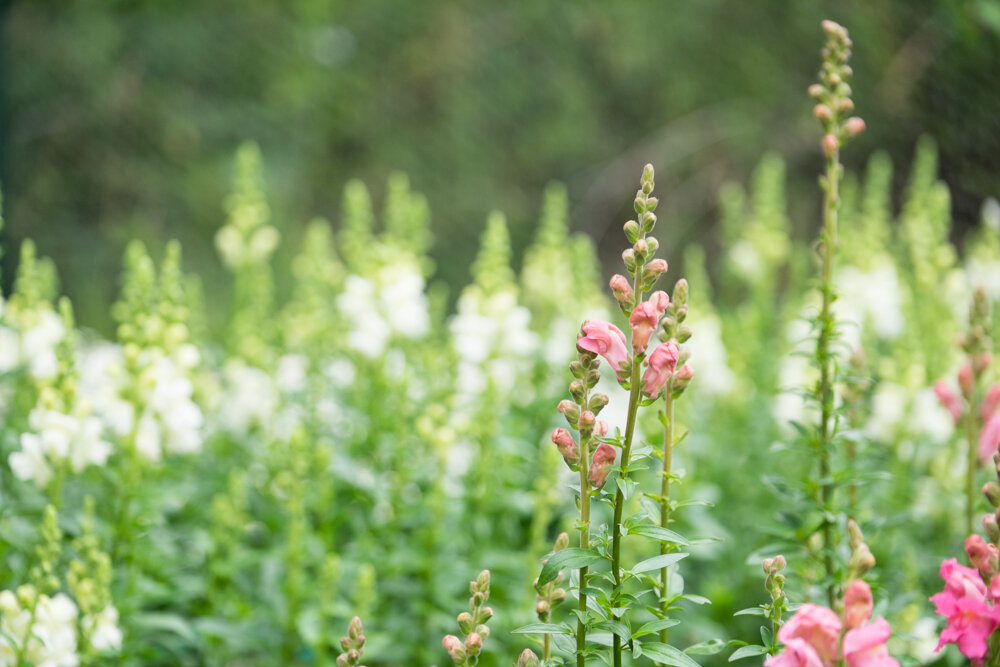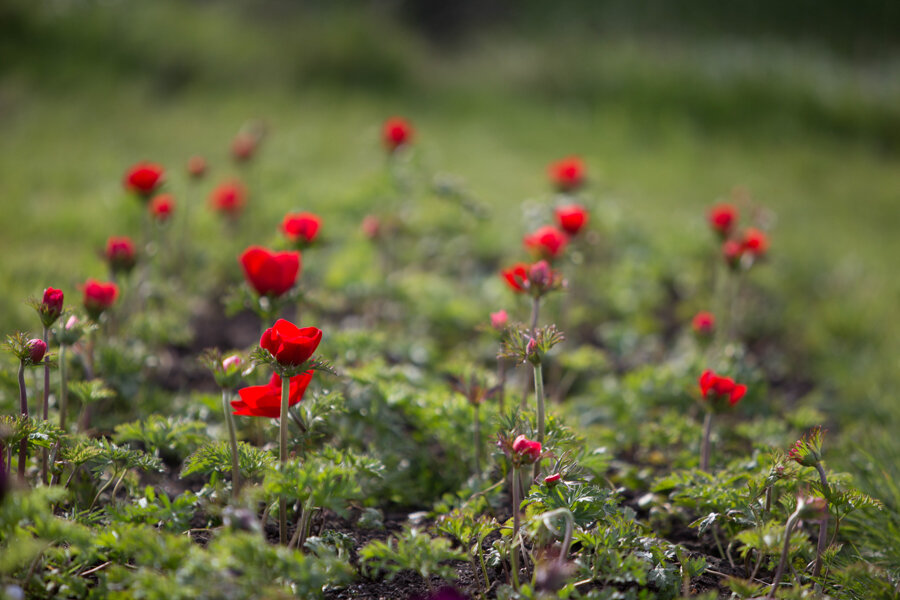Overview of Cutting and Conditioning
Ideally a cutting garden won’t have any flowers in it.
That may seem a strange thing to assert, but if you have followed all the other points on this course, you will have grown the right things that your customers want, and you'll be able to cut all the flowers in the bud, or just as they open, to sell. Ideally, anyway.
Florists who buy from a wholesale market can only work with what they have from then on, the stems in their hand or basket are their raw material. As growers however, we have control over all the stages of growing and cutting so we have a great deal more influence on the end result. This section is all about the bit before we actually cut the flowers.
What is it that makes a good bloom, on a stem that will last in the vase?
“Question:
What do you think are the top 3 things that affect vase life?”
What we're looking for when cutting a bloom, is the ideal point in time when the stem has grown to its best and strongest, and from then on would start "going over".
Of course this is different for almost every flower. We hope we're going to show you the main ones during this module, BUT what makes it the right time for you to cut?
Grow the best plants
The first thing that we as growers have to do, is to make sure that we have the healthiest plant possible. They then have exactly the right conditions for making the best flowers.
The best will have long, strong stems, so that they can hold lots of water, and, they will have multiple flowers that are uniform in size and all well developed.
Making sure that seeds are sown at the right time of year, ensuring bulbs are planted at the right point of the season, splitting and transplanting perennials to ensure that they get the best part of the year to develop strong plants which can support plenty of healthy flowers are all really important to this. Learning to recognise really healthy plants is very important.
The following are the things that I believe are imperative to giving really healthy, strong flower stems. The best growers will do these both by planning and by intuition:
Not "checking" the plants, or holding them back at any point - by pricking out and planting on at the right time. Sometimes the window for the right time can be as small as 4 or 5 days. Another way plants can be checked is if they get too wet, or they dry out, particularly if they are in small containers.
Only propagating from the healthiest plants - this isn't just about making sure that you don't use unhealthy plants to propagate, but that you've chosen the strongest plant, the one that produced the largest flowers, the one where there weren't any blooms that showed any signs of reverting. Whether it's seeds that you're collecting, or divisions or cuttings that you're taking, only using the tip top quality plants can really help you in future years.
Throwing away anything that isn't in good health - even the most organised grower will, from time to time, have plants that have got checked. There will be parts of seed or module trays (flats) that didn't get as much water, or got a double dose, so some small plants may not be as healthy as others. Or maybe the weather just wasn't on your side. In order to get the best quality blooms to cut, you have to realise that these plants shouldn't get planted out into your growing beds. They are attrition, need to be thrown and better quality plants used in their place.
“Have you ever planted things out that you really knew weren’t in the best of health?
Did they thrive, or just survive?”
Growing medium and feed
We haven't talked a lot in this course about feeding plants, because actually all of us believe that the most important thing is the soil/growing medium that you provide for the plants. There is a fine line for flower growing between feeding enough, and feeding too much, so that stems become sappy and brittle. Obviously you want the biggest flowers and the longest stems possible, but for your flowers to be at top quality, you also need them to have sturdy stems and to have needed to do a bit of work in growing.
Use the right growing medium for whatever it is you are growing and your conditions. OK, this is a big ask, but it is another reason to keep notes and records about how things grow.
Learn to realise if the growing medium isn’t doing it’s job and is checking the plant’s growth. The cornflowers in the photo below are showing signs of stress with reddening of their lower leaves. In this case, they've been in the tray too long and have dried out for a couple of days. They now won't be good enough to plant out and provide exceptional flowers, so need to be thrown away.
Weather
Weather is often beyond our control, but learning to watch forecasts and protect plants, if feasible, will improve the quality of flowers.
These daffodils are perfectly hardy, and won't mind being covered in snow. It will water them gently when it melts, but some larger shrubs or perennials can be damaged and will regularly need the snow brushed off them.
Choosing The right varieties for cut flowers
The last thing that we, as professional growers have a say over, (and this often causes first time flower growers to despair at ever producing professional quality flowers) is the varieties.
Not all flower varieties are equal....
Just because you've seen a flower at the market, it doesn't hold that every variety or colour of that flower will be appropriate for growing as a cut bloom. Key crops that this particularly applies to are:
Antirrhinum - use Rocket mixed, or the Potomac series.
Anemones - the Meron and Gallilee series have longer stems and more predictable colours.
Ranunculus - specialist corms from Italy and Israel, will provide stronger and longer stems.
Sunflowers - for length of vase life, the pollen-less varieties e.g. Procut, or Sunrich range are best.
Dahlias - everyone has their favourites of these, but generally doubles and pom-poms last longer in the vase.
You will need particular cultivars of flowers specially bred by seed or bulb growers to provide tall strong stems. You will come across different cultivars targeted at gardeners, that are probably more dwarf in height, may be of mixed colour origin, and don't come as true to type - and are often cheaper. Be aware of this when you’re ordering seeds and plants, it’s easy to accidentally order lovely bedding plants that are totally useless as cut flowers!








